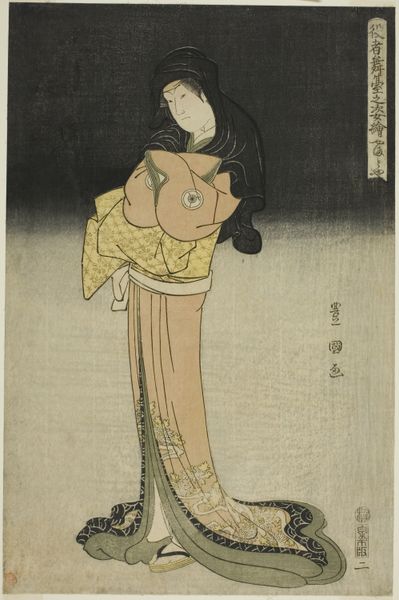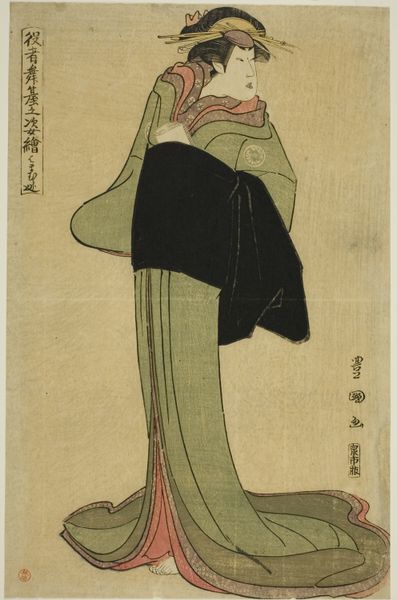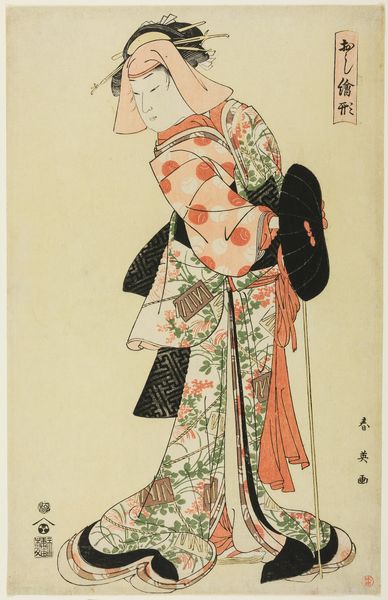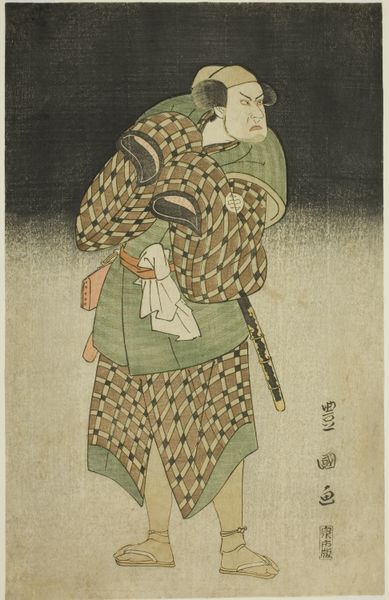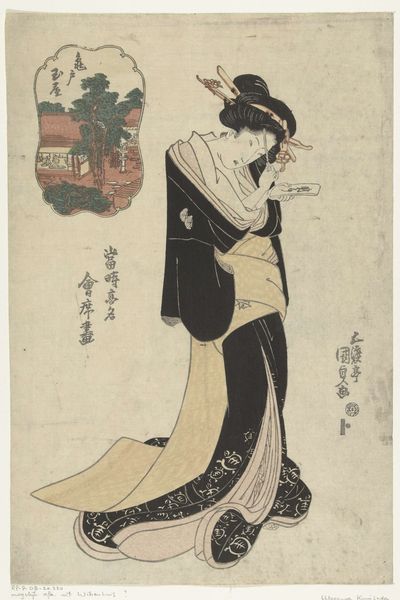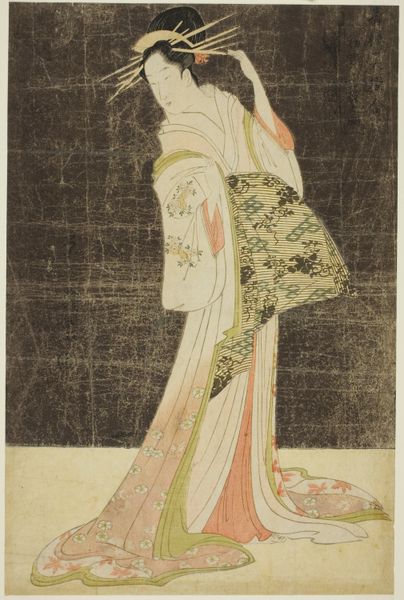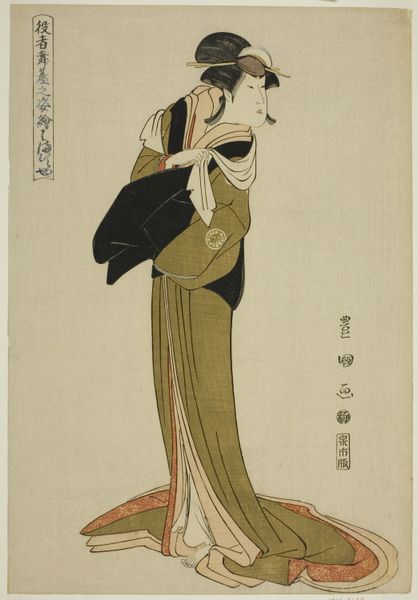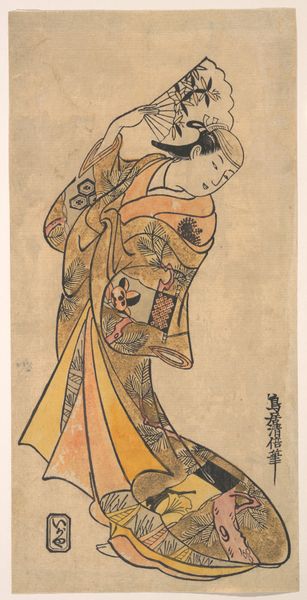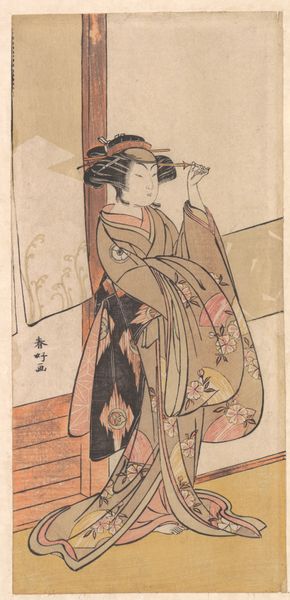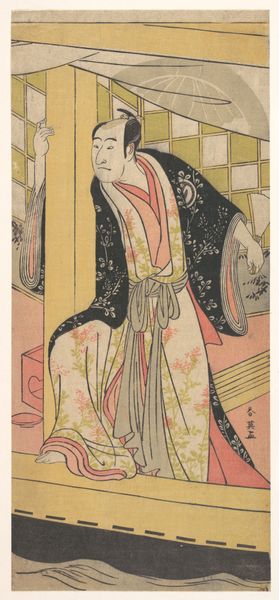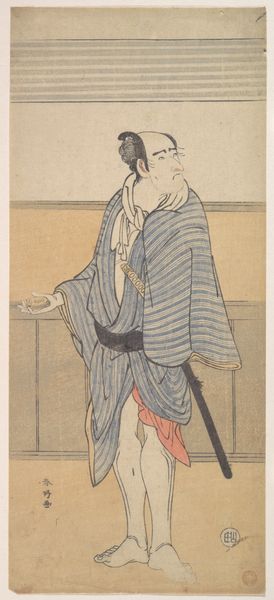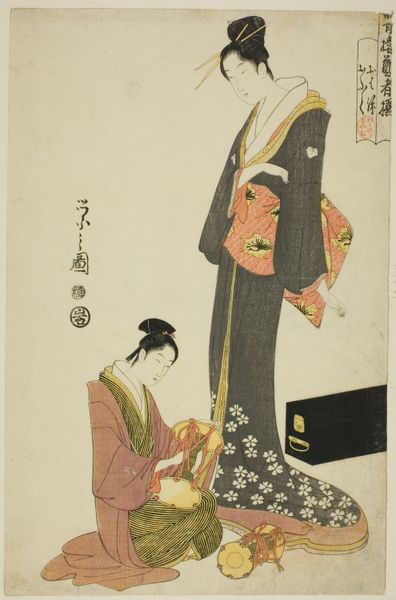
The actor Segawa Kikunojo III as the shop boy Chokichi 1796
0:00
0:00
print, woodblock-print
#
portrait
# print
#
asian-art
#
ukiyo-e
#
woodblock-print
Dimensions: 15 1/4 × 10 1/4 in.
Copyright: Public Domain
Curator: Let's discuss this striking Ukiyo-e woodblock print from 1796 by Utagawa Toyokuni I. It is entitled "The actor Segawa Kikunojo III as the shop boy Chokichi," now at the Art Institute of Chicago. Editor: The somber tone immediately grabs you. There’s something quite refined and contained in its composition, with that stark contrast between the deep black and subtle creams. Curator: Absolutely. The composition is intriguing. Notice how the artist used contrasting tones—a deep, almost impenetrable black for the backdrop, sharply juxtaposed with the subtly patterned kimono and the gentle gradation in the grey ground. It's not just decorative, it's structuring the visual field, drawing our attention. Editor: I’m especially interested in the kimono. Look at those stripes, clearly indicating different materials used to make the cloth. The variations speak volumes about the economics of clothing, of accessing materials, and how it informs the depiction of class through costume in theater. How labor is invisibly woven, so to speak, into the fabric's representation. Curator: Precisely! The patterns aren’t mere surface embellishments. They are, one could argue, signifiers. Each line, each form participates in the construction of the subject’s identity within this specific theatrical and cultural context. Notice the stylized beauty but lack of shadow or illusionistic depth that is such a part of Ukiyo-e, further distancing it from true naturalism and keeping it in the symbolic world. Editor: I wonder what the labor involved in carving these precise blocks was like. I want to appreciate this from the printmaker’s side. These are skills honed through dedicated apprenticeship; how did that system shape the aesthetics? Curator: A valid point! Understanding the production shapes the context of its reception. We see how a complex cultural dialogue about identity, class, and representation plays out within and around this carefully crafted artwork. Editor: For me, engaging with its means of production pulls back the curtain and allows us to consider the social forces at play and opens avenues to better see it. Curator: It's fascinating to see how, through different lenses, we can reveal these hidden layers of artistic endeavor and cultural significance in what might, at first glance, seem like just an unassuming portrait.
Comments
No comments
Be the first to comment and join the conversation on the ultimate creative platform.
